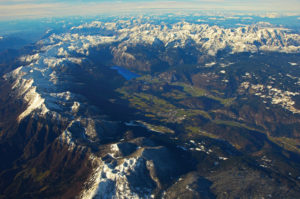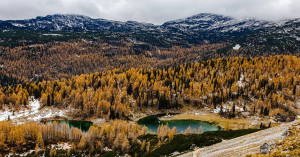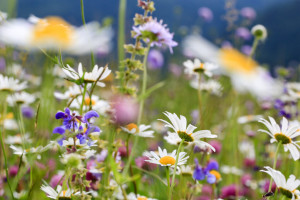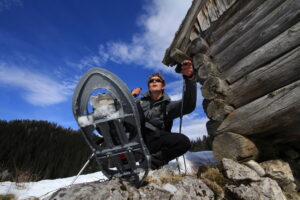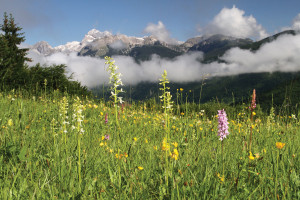Valley of the Triglav Lakes
About an 8-kilometre long valley beneath Mount Triglav has been praised as one of the most beautiful parts of the Julian Alps since the beginning of mountaineering.
The Triglav Lakes Valley is a glacial alpine valley between Bohinj and Trenta. The valley itself is the result of the mighty overthrust of the Slatna plate, whereas the formation of the lakes on the karstified ground was enabled by the impermeable sediments.
The valley has been protected as a national park since 1924. It is characterised by varied terrain, interesting plants and animals, fossils and Alpine animals. The Valley is also known for its well-developed karst phenomena and the story of Zlatorog. With its lakes and marshes, this stunning valley is a photographer’s paradise.
The waters from the highest lying Lake under Vršac flow to the Soča Valley and the Adriatic Sea. All other lakes are hydrologically connected, and their waters flow to the Sava Bohinjka river and further to the Black Sea.
Access to the Triglav Lakes Valley
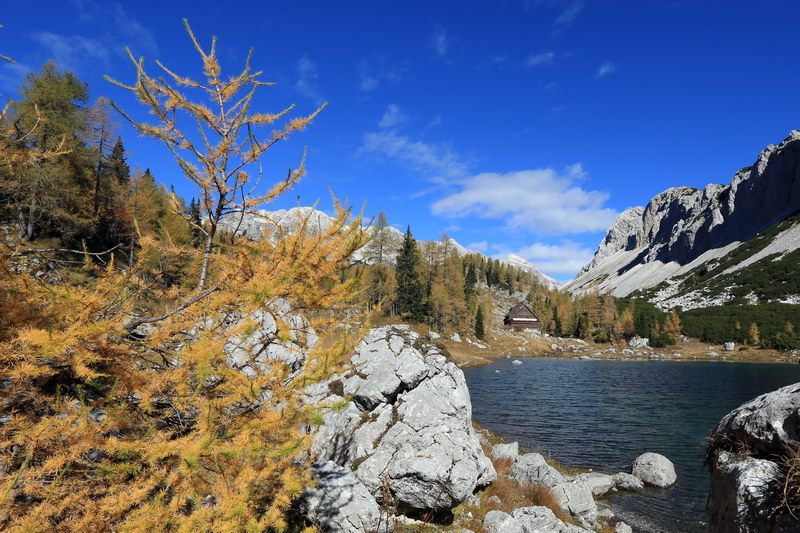
From the Bohinj valley, the Triglav Lakes Valley can be reached from Stara Fužina, past the Blato mountain pasture and via mountain pastures Planina pri Jezeru, Dedno polje and Ovčarija. From Ovčarija you can reach the Hut by the Triglav Lakes (1685 m) either via čez Prode or čez Štapce path – in both cases it takes about 5 hours.
Accessing the Valley via Komna takes nearly 5 hours as well. The third possible way leads by the Savica waterfall. After a demanding steep and winding path through Komarča, it takes about 2 hours to get to the Black Lake (Črno jezero, 1294 m), and about 3 hours to the Hut by the Triglav Lakes. It takes another good two hours of walking to get from Hut by the Triglav Lakes to the Zasavska koča na Prehodavcih hut (2071m).
Triglav Lakes
Although the lakes and ponds are more numerous, one usually speaks of the seven Triglav lakes listed below. This is because the others dry up several times throughout the year.
- Lake under Vršac also called Lake at Podstenje; 1,993 m above sea level, often frozen most of the year
- The Pool in Laštah under the Zasavska koča na Prehodavcih hut – often dries up during the summertime
- The Brown Lake 150 m long, 100 m wide, 10 m deep
- The Green Lake up to 2 m deep, green colour due to the algae
- The Great Lake or Lake at Ledvica – largest lake, 1930 m above sea level, 300 m long, 120 m wide, up to 15 m deep
- The Double Lake at the Hut by the Triglav Lakes, 1685 m above sea level, turns into one at high water level
- The Black Lake is the warmest of the Seven Lakes; 1,319 m above sea level, 150 m long, 80 m wide, 6 m deep
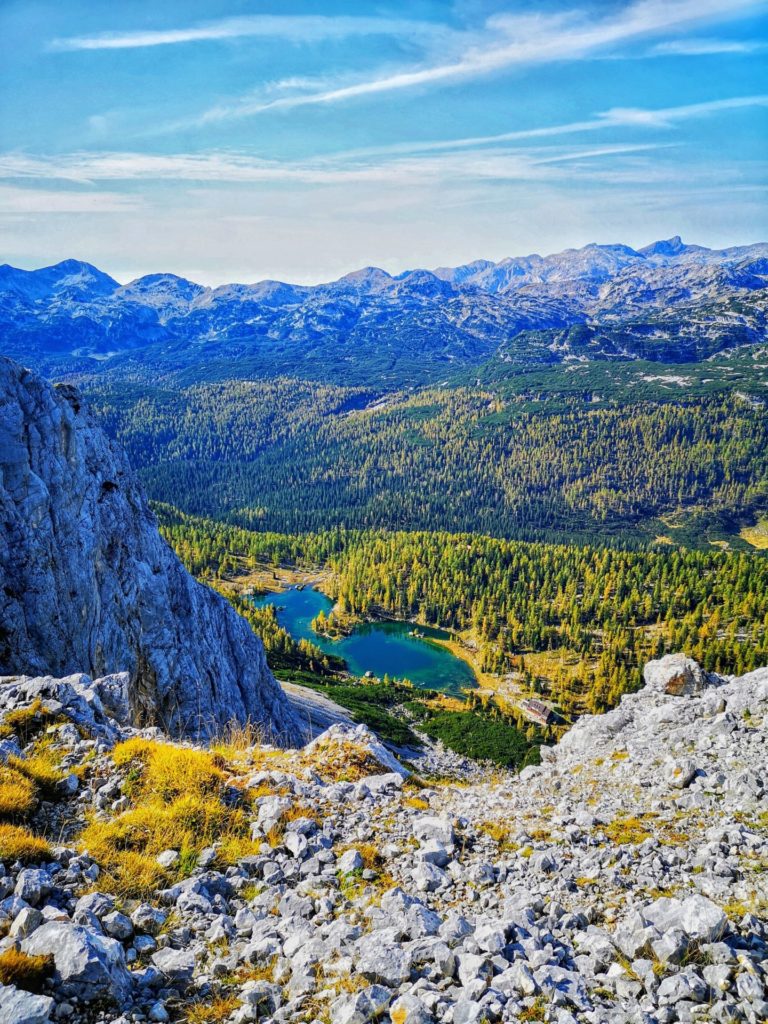
Warning
Swimming or other recreational activities are strictly prohibited in the lakes. If not for the sake of the law, at least for the sake of your conscience. In the mountains, we leave only our transient footprints (so take your rubbish with you).
The Triglav Lakes Valley is also interesting because of its flora
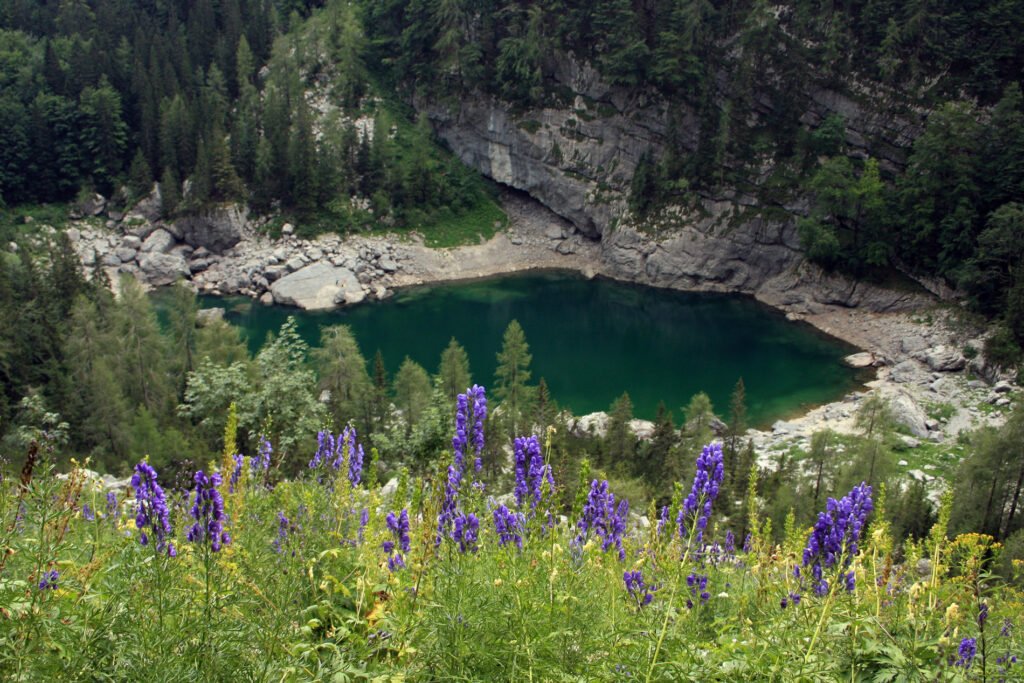
The higher part of the Valley is mainly covered in lichen, but the more one descends, the more flowers one encounters, also endemic ones.
- Round-leaved Pennycress (Thlaspi rotundifolium) which survives by moving around on limestone screes
- Mountain Avens (Dryas octopetala) which spreads its sprawling sprouts around rocks in a net-like manner
- delicate white-flowered Julian Poppy (Papaver julicum)
- Alpine Toadflax (Linaria alpina) and
- Pyrenean Whitlow Grass (Petrocallis pyrenaica).
In the lower-lying lakes there can be found also: Martagon Lily (Lilium martagon) and Carniolan Lily (Lilium carniolicum), Great Yellow Gentian (Gentiana lutea) and Alpine Clematis(Clematis alpina) and many other plants, and in the lower part of the valley also communities of trees.
Other attractions in the Triglav Lakes Valley
Reddish Jurassic limestones contain fossilized shells of ammonites (marine molluscs from the Jurassic which started becoming extinct 100 million years ago for unknown reason) measuring up to 20 cm. The easiest way to see a fossilized ammonite is in the rock that is built in the east wall of the Hut by the Triglav Lakes.
The Valley of the Triglav Lakes is also significantly marked by all the mountainous karst forms which are clearly visible due to plenty of rain and lack of soil and vegetation. The most common ones include bare graduated plates called lašti. Other interesting forms include grooves and several metres long limestone pavements, sinkholes, kotlics (“snow kettle”, a kind of karrens), perched blocks, chasms and other phenomena.
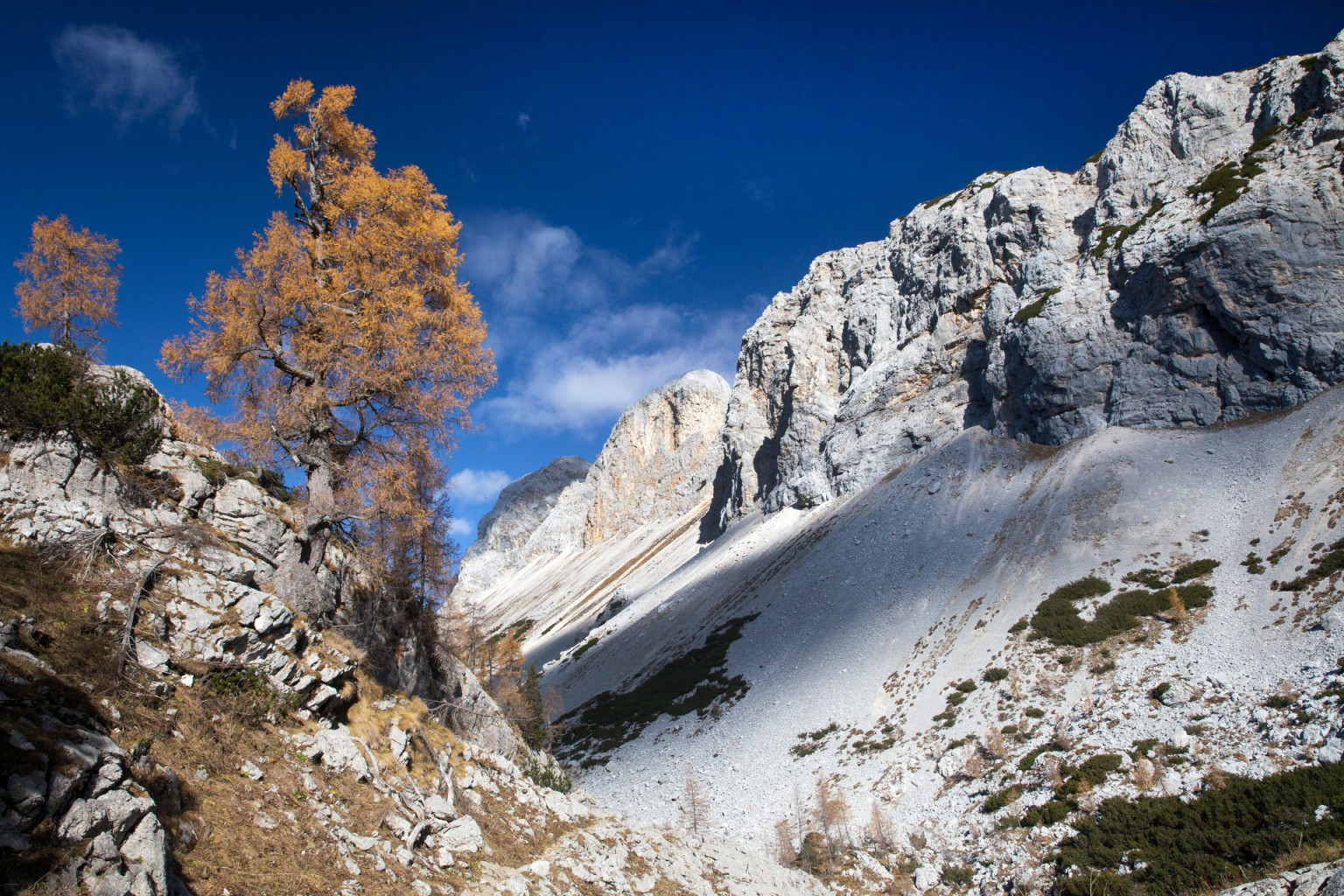
Related content
